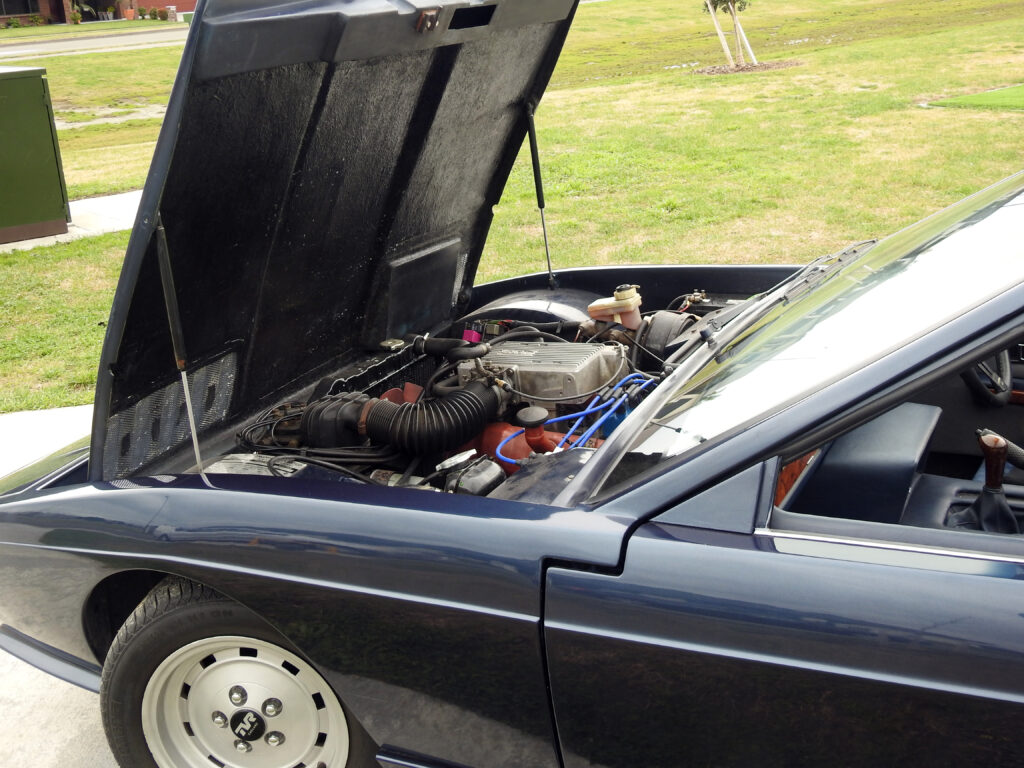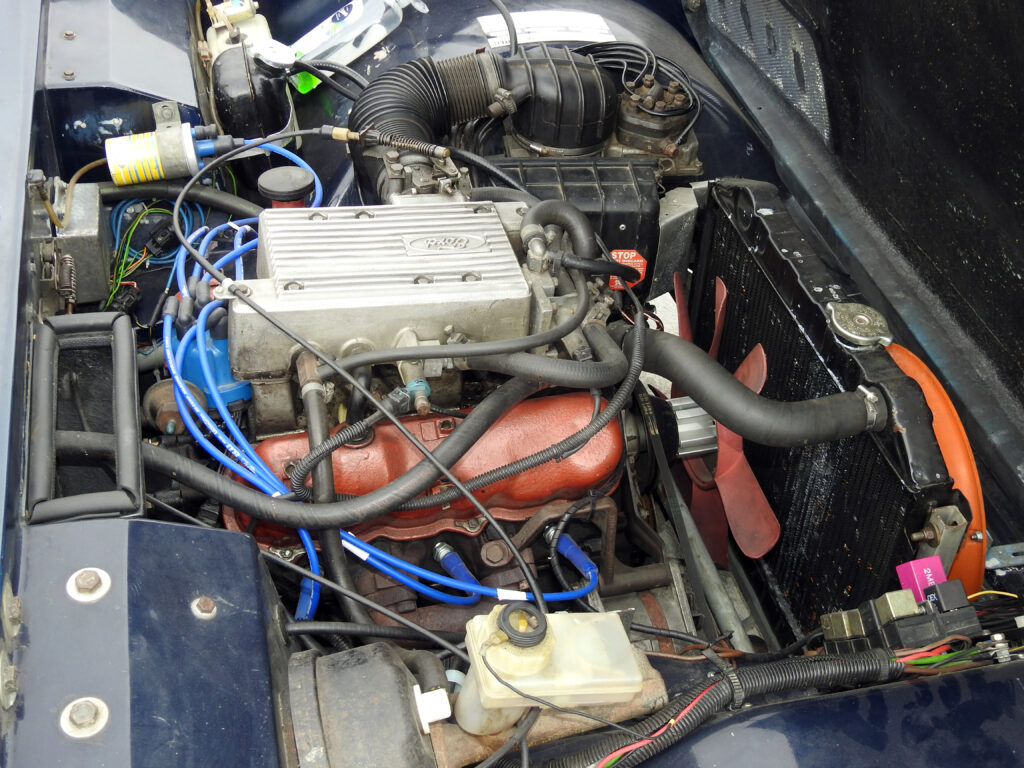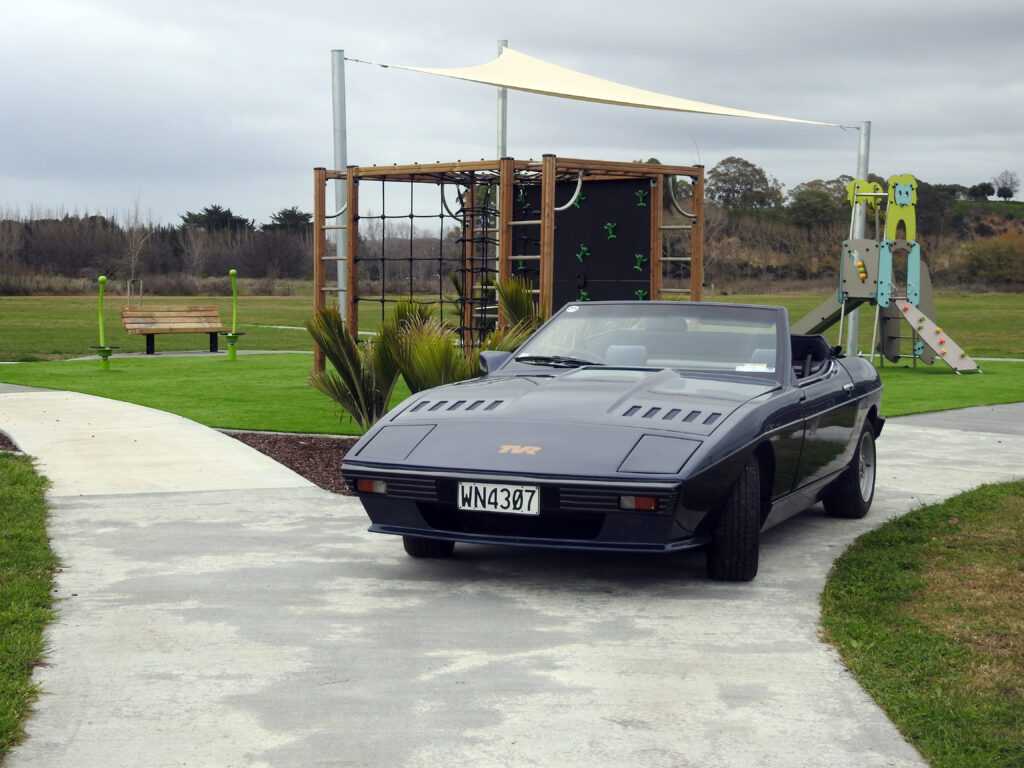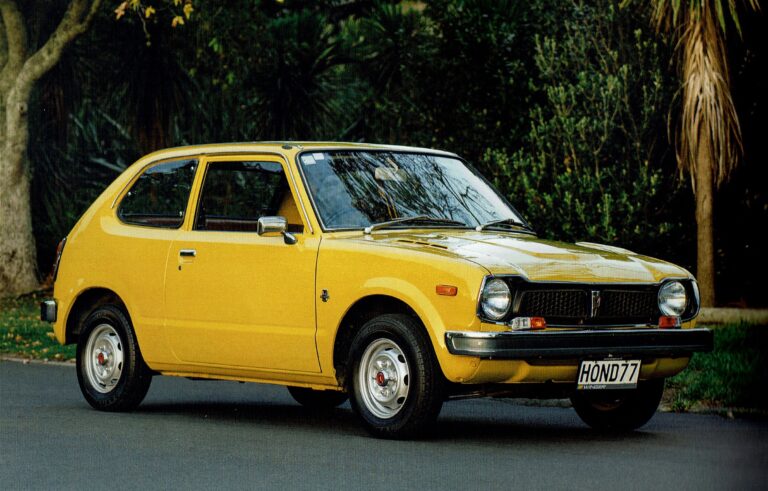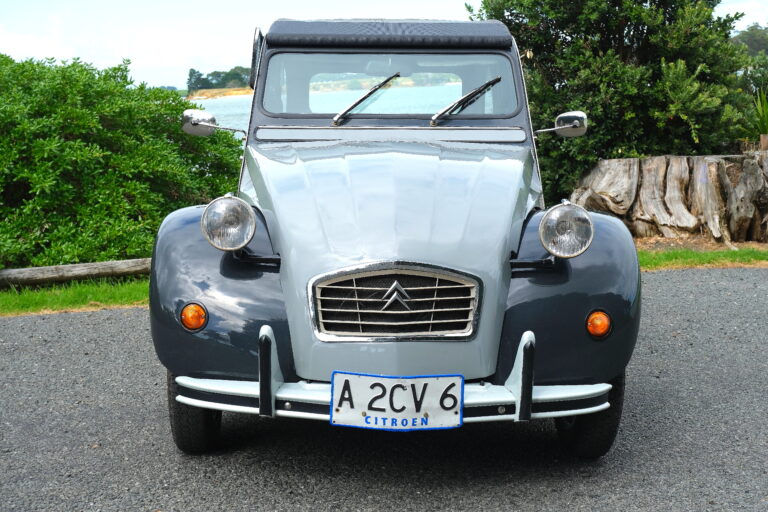Fancy a ‘wind in your hair’ sports car?
Forget mass-market models and floppy old roadsters. Get something designed from the get-go as a pure, individualistic sports car
By Patrick Harlow
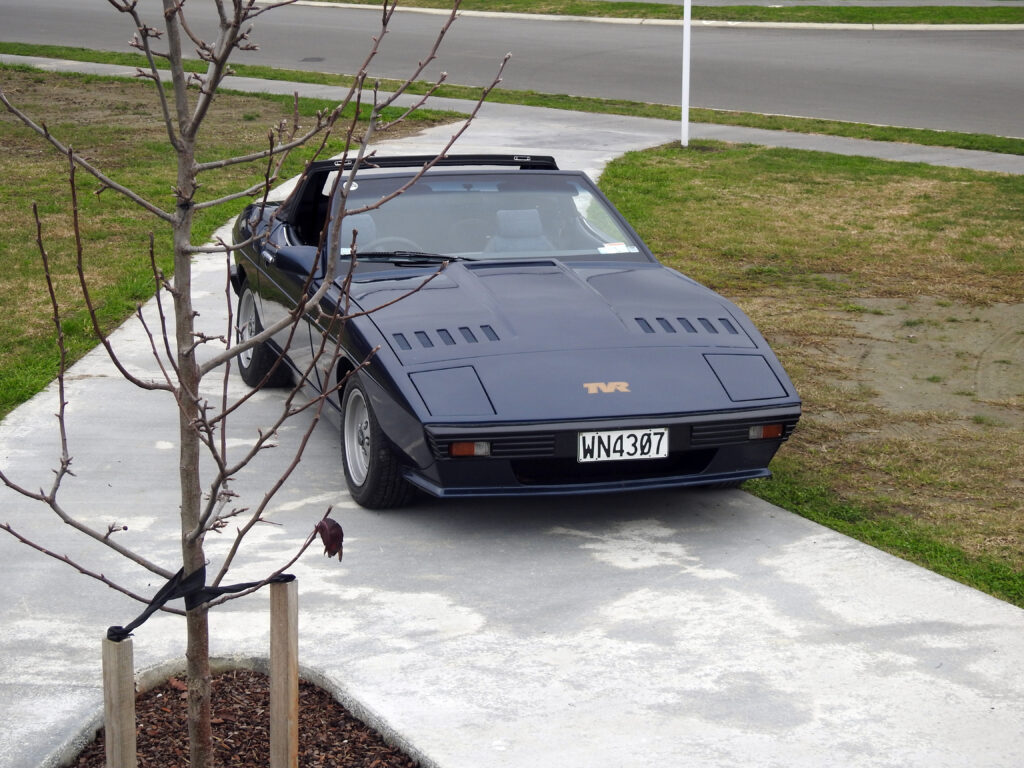
Neville Wilson of Napier has been a keen member of the Vintage Car Club for most of his life. He showed me the collection of cars in his garage, including a 1937 Dodge Coupe he has owned for 25 years. Behind that was a 1929 OHC Morris Minor that has been in the family for even longer. It was considered a good buy in 1961. Now retired, Neville enjoys going for runs with other club members, especially on balmy spring days in a car with the roof down. What could be better than doing it in an old roadster, preferably something with a bit more get up and go than the Morris, lovely though it is? Its 20bhp (15kW) 847cc engine makes it considerably faster than a single horse and cart but not much else.
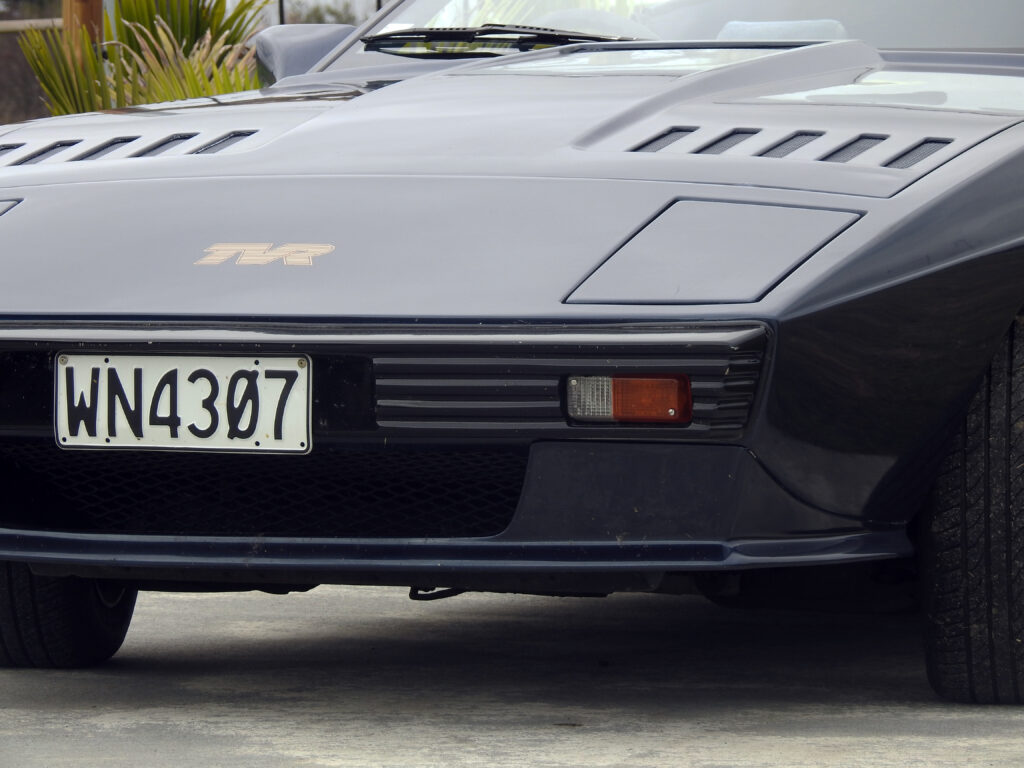

Modern vintage
As we know, classic cars are getting more modern as time passes. The Vintage Car Club offers a slightly quirky take on this, as the date at which a car is eligible to join the Vintage Car Club moves forward just every two years — which brings Neville’sTVR Tasmin into frame.
With a 2.8-litre V6 power plant producing 160bhp (119kW), the TVR is satisfyingly more powerful than the Morris Minor. Originally known as the Tasmin 280i, and these days more popularly known as ‘the Wedge’, the car personifies the shape of many sports cars of the late-’70s to mid-’80s era.
Neville’s 1982 Tasmin represents the last year for the 2.8 V6; later cars had a Rover V8. It is also the last time the Tasmin name was used on a TVR.
The Tasmin was the last Martin Lilley TVR, before TVR was purchased by Peter Wheeler in 1982. To be fair, the Rover V8-powered examples were the real headline-grabbers of this era but the 2.8 was no slouch. The plastic body conferred a good power-to-weight ratio, so it was competitive with other GT cars of the day, such as the Lotus Elite.
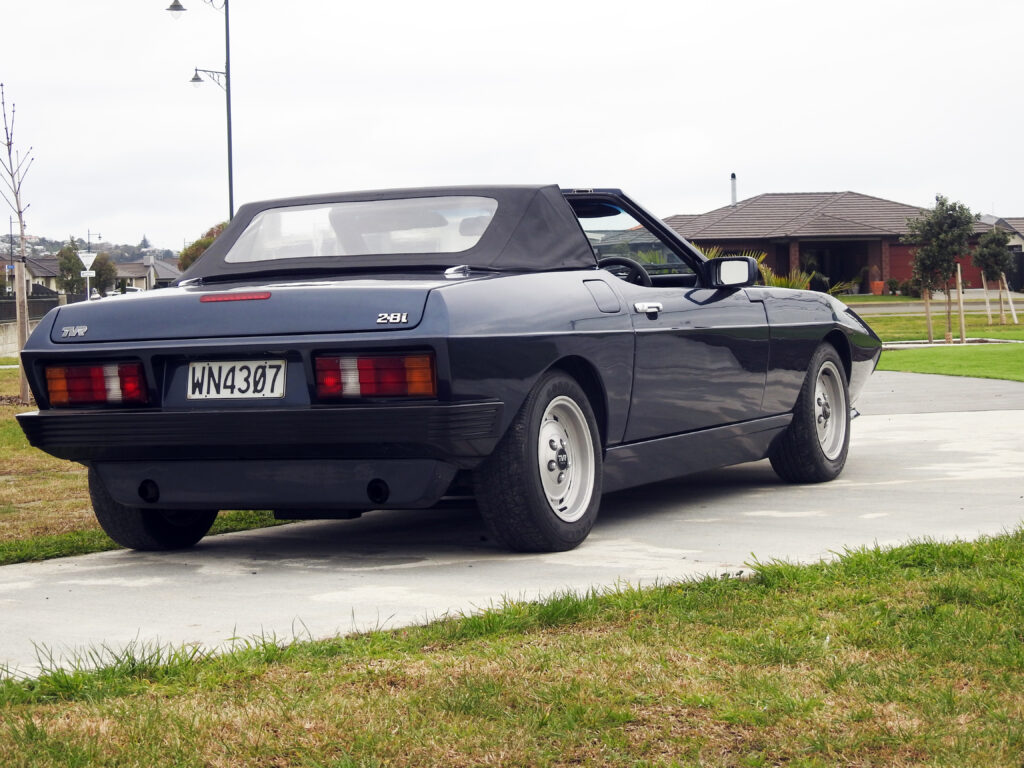
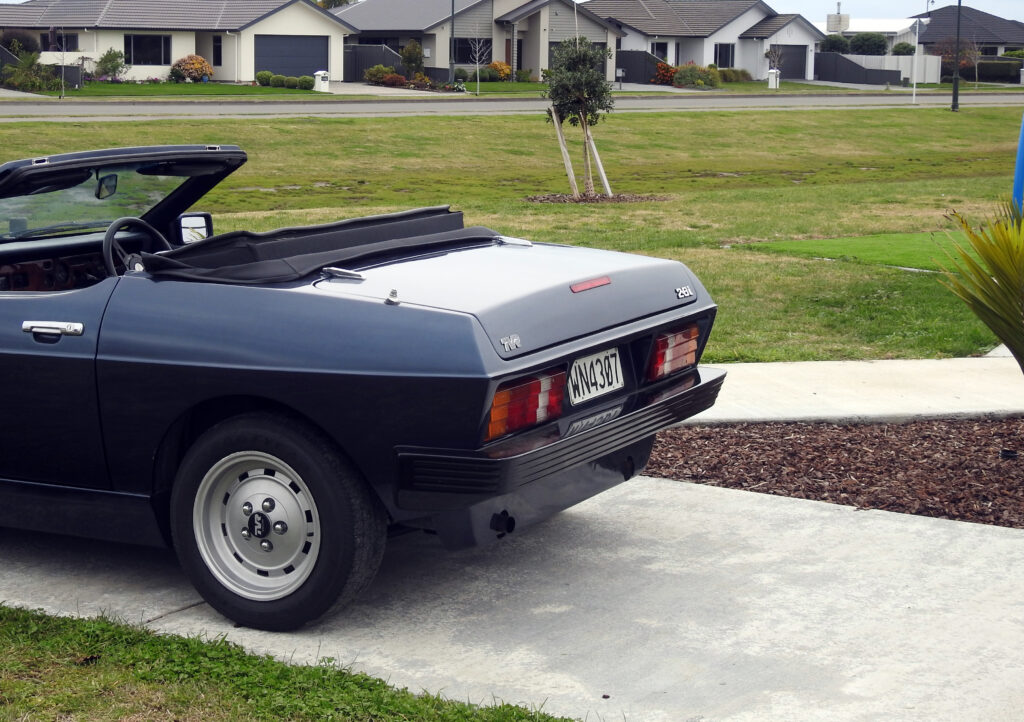
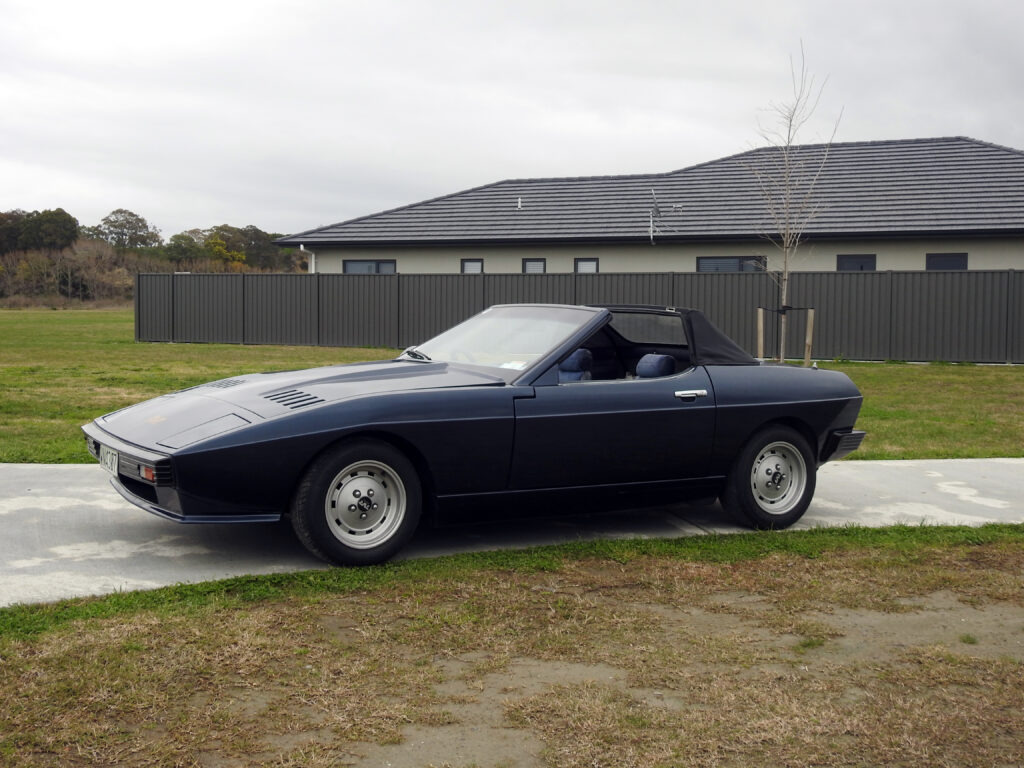
Shared design
The similarity of the TVR to the Lotus is not surprising as they share a designer. After leaving Lotus, Oliver Winterbottom went on to design the Tasmin. Another Lotus designer, Ian Jones, joined TVR at about the same time and was instrumental in designing the car’s backbone chassis with sturdy outriggers supporting the fibreglass body.
Along with the engine, most of the parts came from Ford. The rear differential came from the Jaguar XJ-S. The Tasmin was even available with Ford’s Cortina 2.0-litre engine but sales for this model were so poor it was quickly dropped.
The switch to Rover power meant just 1400 2.8-litre cars were produced, of which just over half were roadsters, making this a pretty rare sports car. Few will be as well-preserved as the car that belongs to Neville. Neville takes no credit for this as he has only owned the car for a couple of years. He gives all kudos to Andrew Priest, who brought the car with him when he immigrated in 1997. A TVR man for most of his life, Andrew ensured that the car was in tip-top condition when he sold it in 2016.
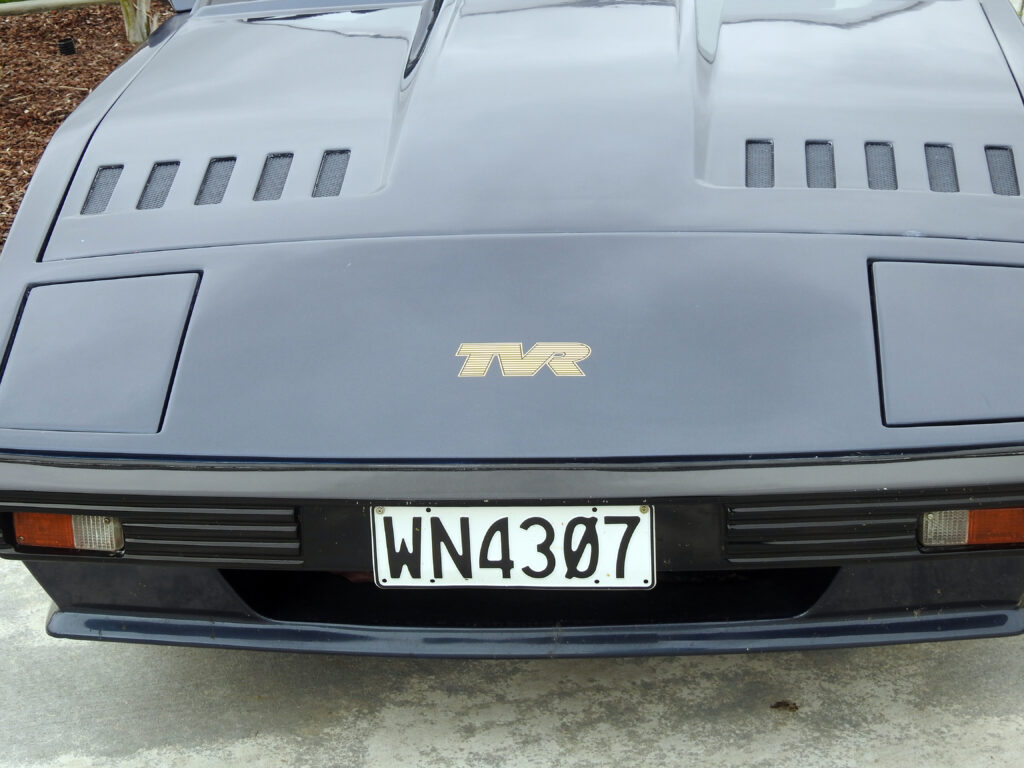
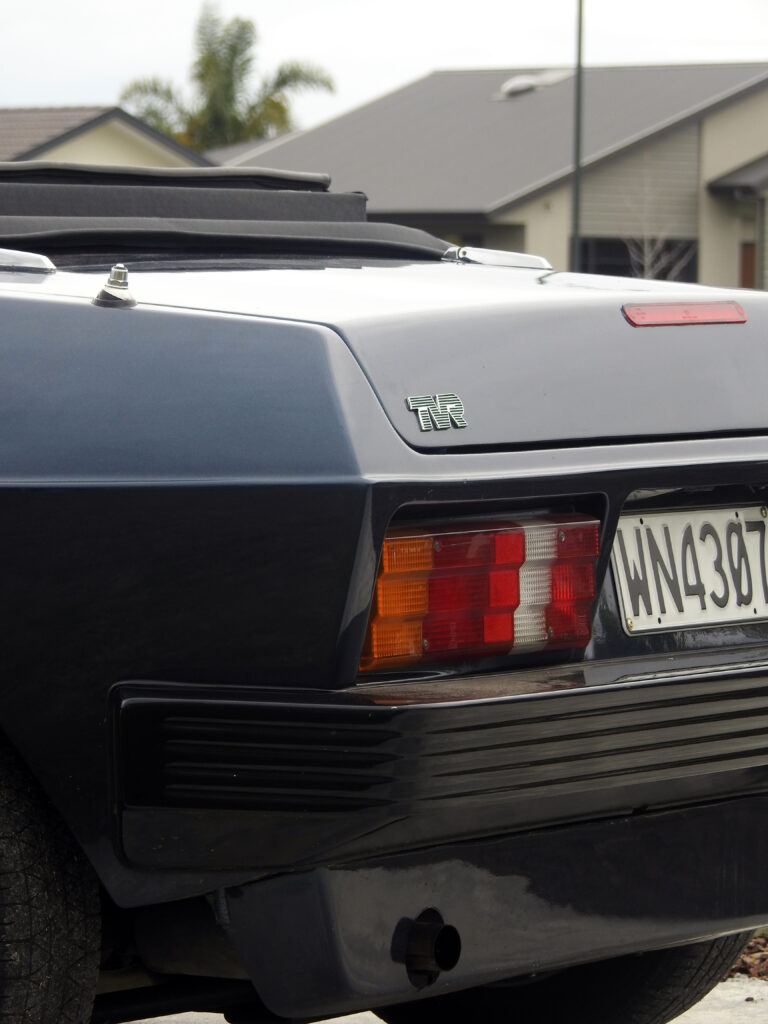
Designed for hard driving
My first impression on hopping into the Tasmin is of being low to the ground. The huge, steeply raked windscreen finishes just above your head. It was revolutionary in its day — the Tasmin was one of the first cars to have its windscreen bonded in place.
Like all TVRs, the Tasmin is designed to be driven hard. The gearstick falls easily into the hand and the column controls demand a bit of a reach. The pedals are narrow but nicely spaced apart. Seats are comfortable, with room in the footwell for a person well in excess of 1.8 metres in height. There is plenty of room in the car from the footwells to the shoulders. I liked the high transmission tunnel and the feeling I was in the cockpit of an aeroplane.
The interior of the car is classic British sports car: plenty of wood. Its instrumentation is an example of TVR’s famed quirkiness. The gauges, although clearly visible through the steering wheel, are frustratingly small and highly detailed, which makes them quite hard to read at a glance.
The door panels appear unfinished. The velour panels seem to have been fitted as an afterthought as the pressure came on to get the car into production quickly, with a grab handle slapped on to close the door.
The four-speed gearbox had a little bit of play, as befits a car of this age. The clutch was heavyish but not too heavy, although I would not want to drive the car in rush hour traffic. It has been a while since I have driven a car without power steering. Neville is seriously considering fitting it to this car. The power steering from a V6 Mk5 Cortina should bolt straight into the Tasmin.
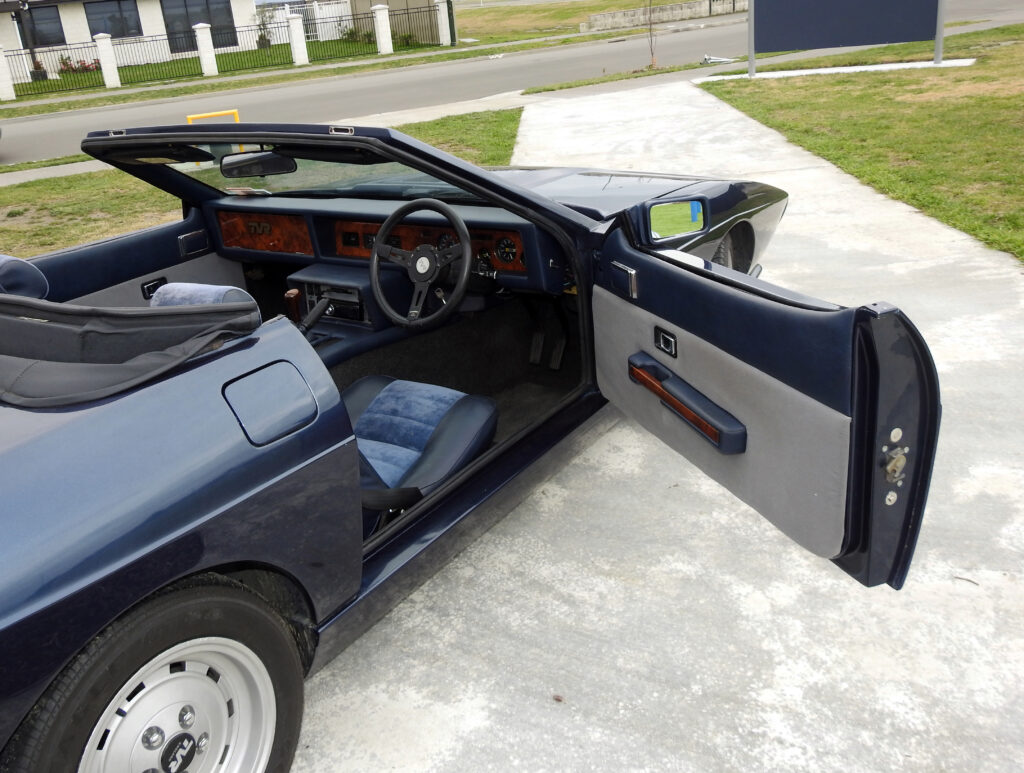
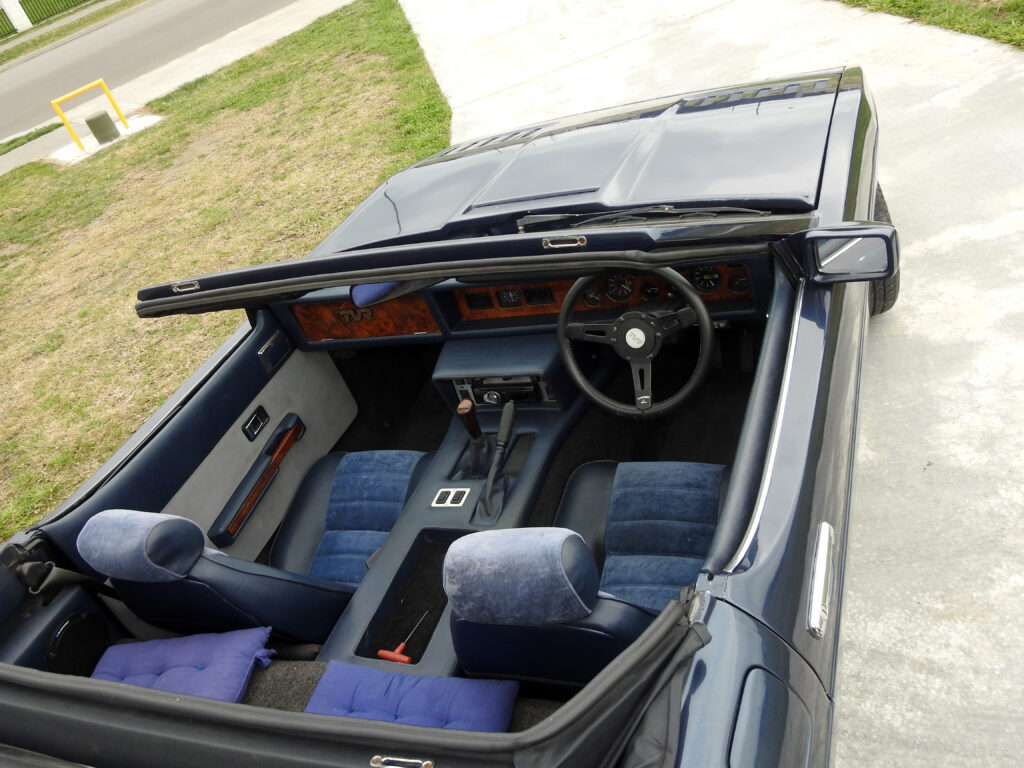
It all comes together
Once on the open road, I applied the loud pedal and things changed. At speeds over 40kph, the steering came into its own — responsive with plenty of feedback from the road. The nose came up and the car accelerated very smoothly and quickly up to the legal speed limit. Once moving, everything came together. The effort to press the clutch was forgotten as the gears flowed into each other. This is a genuinely nice car to drive, the engine noise loud but acceptable. The car was geared for European touring so it is necessary to change down a gear when overtaking slower vehicles. No problem.
On windy roads, the car felt very firm. I did not push it to anywhere near its limit but it handled very well and I was confident it would give me no surprises even if I had gone into a corner carrying a little too much speed. The view outside the car was panoramic. The large windscreen gave a great view of the road ahead. The bonnet bulge was clearly visible and broke up the otherwise flat bonnet in a pleasing manner. When moving fast, the Tasmin is a great car to drive.
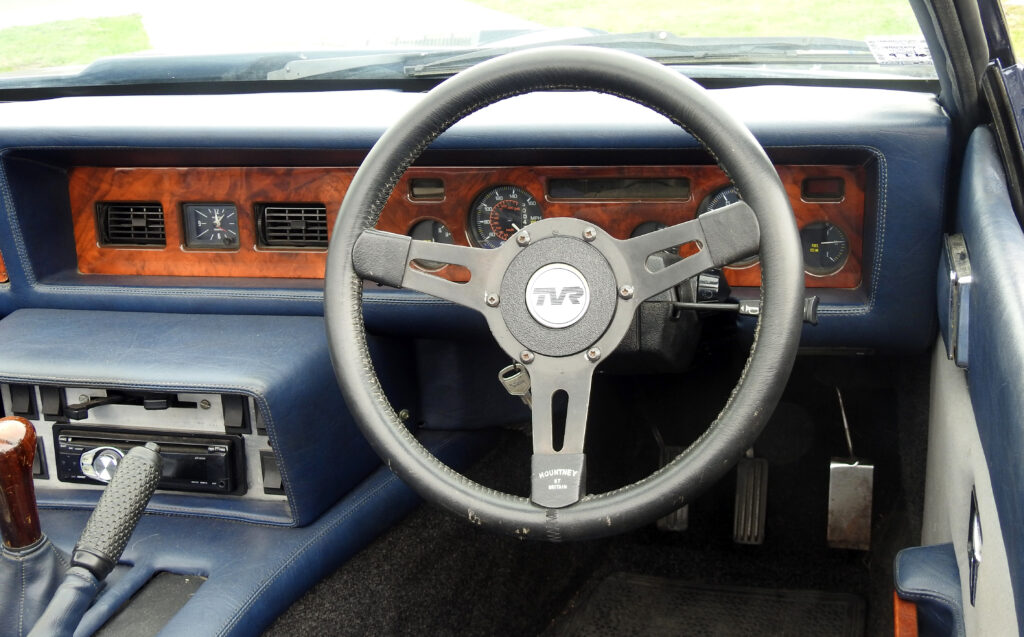
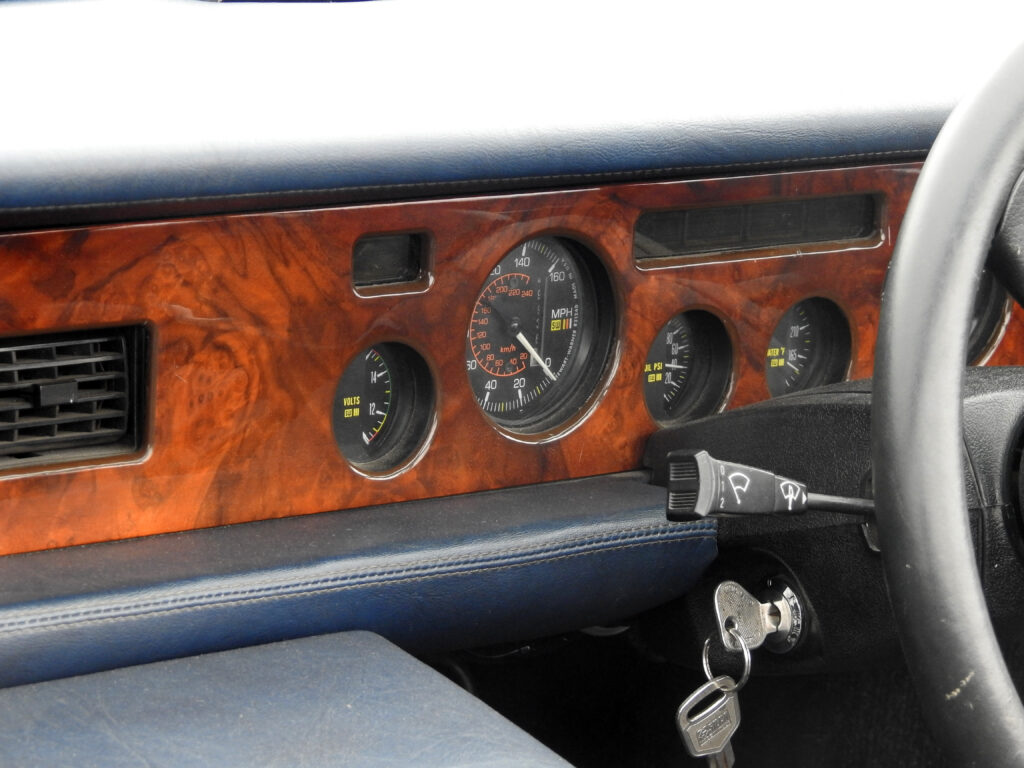
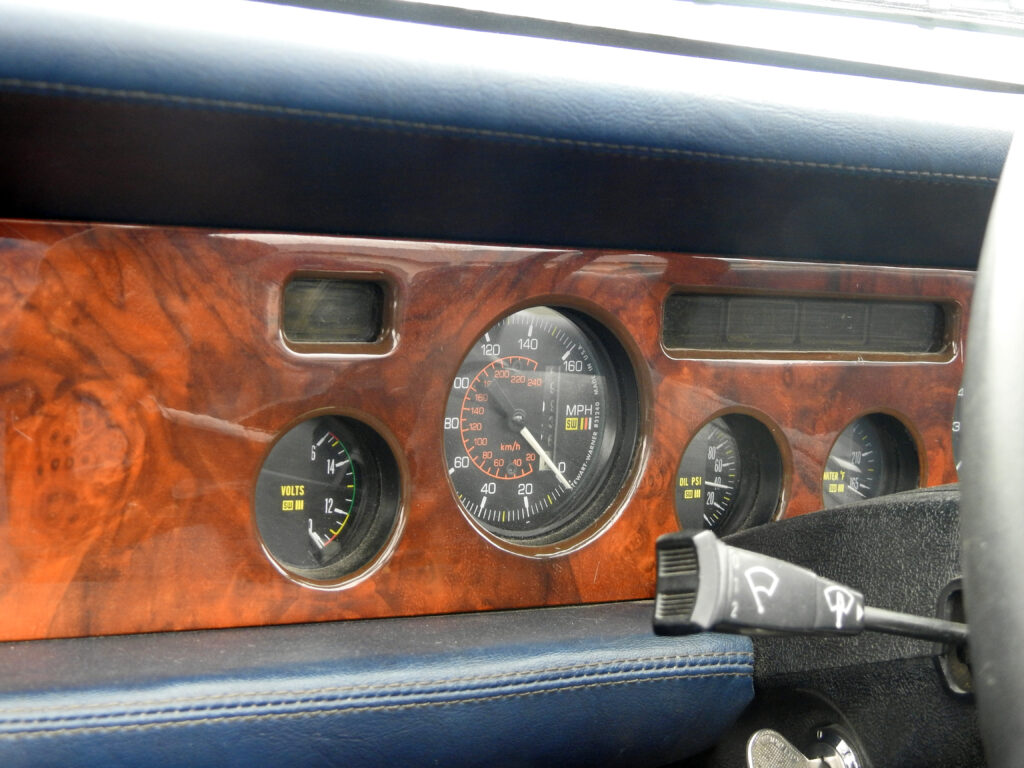
Age has not wearied it
I think the car looks best in its roadster form with the ‘Targa’ soft-top down. While the exterior wedge shape is now dated, it works better than the coupé version. When I first saw this car in magazines in my teenage years, it instantly became one of my dream cars. Alongside its contemporaries such as the Triumph TR7, the Lotus Elan and Esprit, and the Reliant Scimitar Sabre, it more than held its own in performance and style.It has its detractors, but this is still a great-looking car with the long bonnet and short tail that can only ever belong to a sports car. Its once de rigueur styling is now different enough to make it stand out in any crowd.
One of this car’s strangest quirks is its wiring. TVR must have got a good deal on black-coated wire as it is used throughout the car. Coloured tags serve to differentiate each circuit but, over the years, many of these tags fall off. Often the only way to problem-solve any electrical fault is to try one wire at a time. I have yet to meet an auto electrician who enjoys working on wedge TVRs.
Wiring aside, these sports cars are perhaps surprisingly reliable. That is a very good thing as, during its production run from 1980 through to 1988, TVR often dipped into different parts bins for things such as switchgear and internal door handles. Another plus is that this iconic car has enough personality to have created a devoted circle of fans and suppliers on the web who are keen to provide knowledgeable support.
Neville first saw his TVR for sale in Timaru in 2016 but unfortunately it was snapped up before he could act. It came up for sale again just over six months later. This time Neville was ready to pounce. Now that he has it, he does not intend to sell it.
